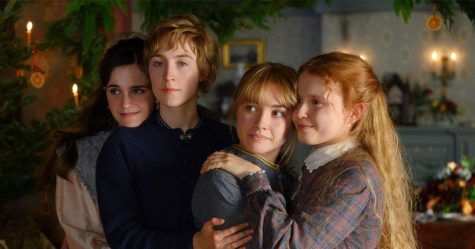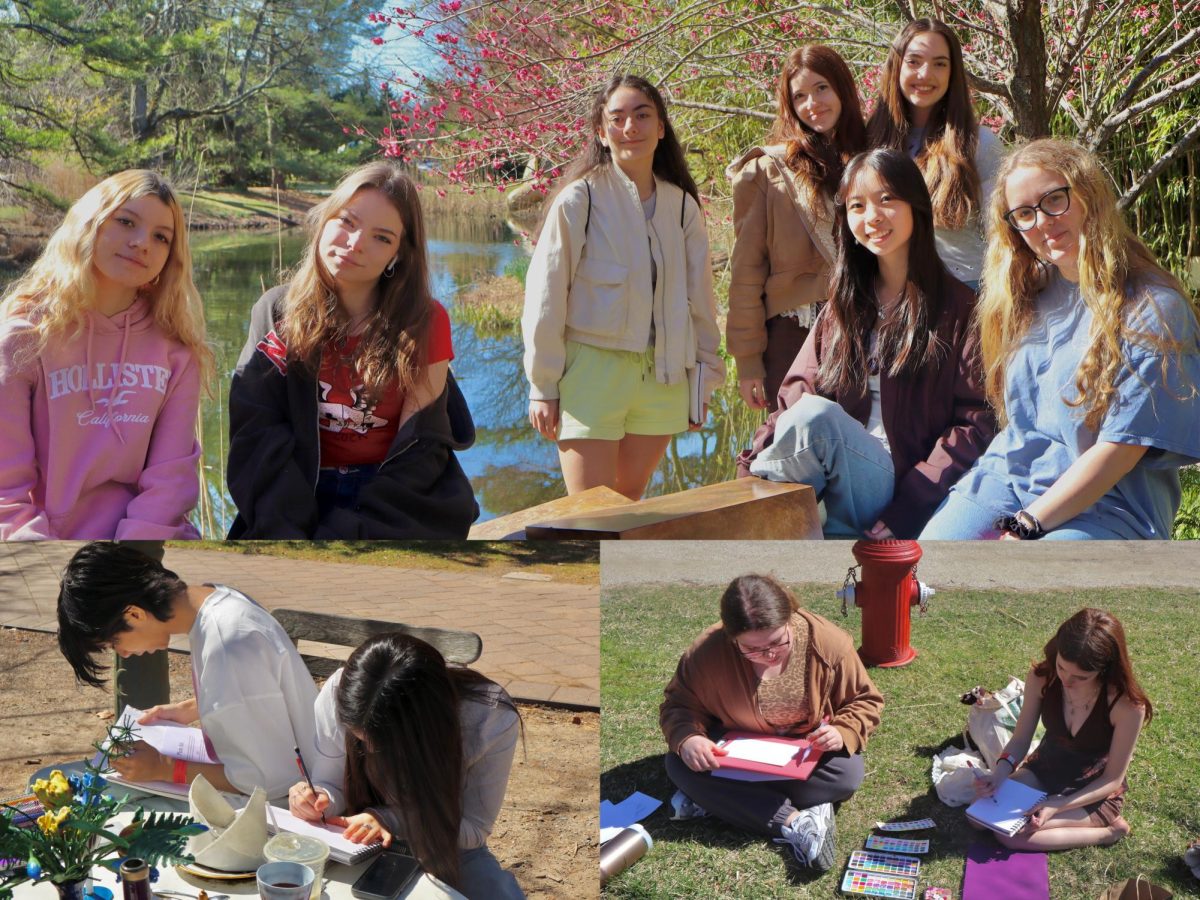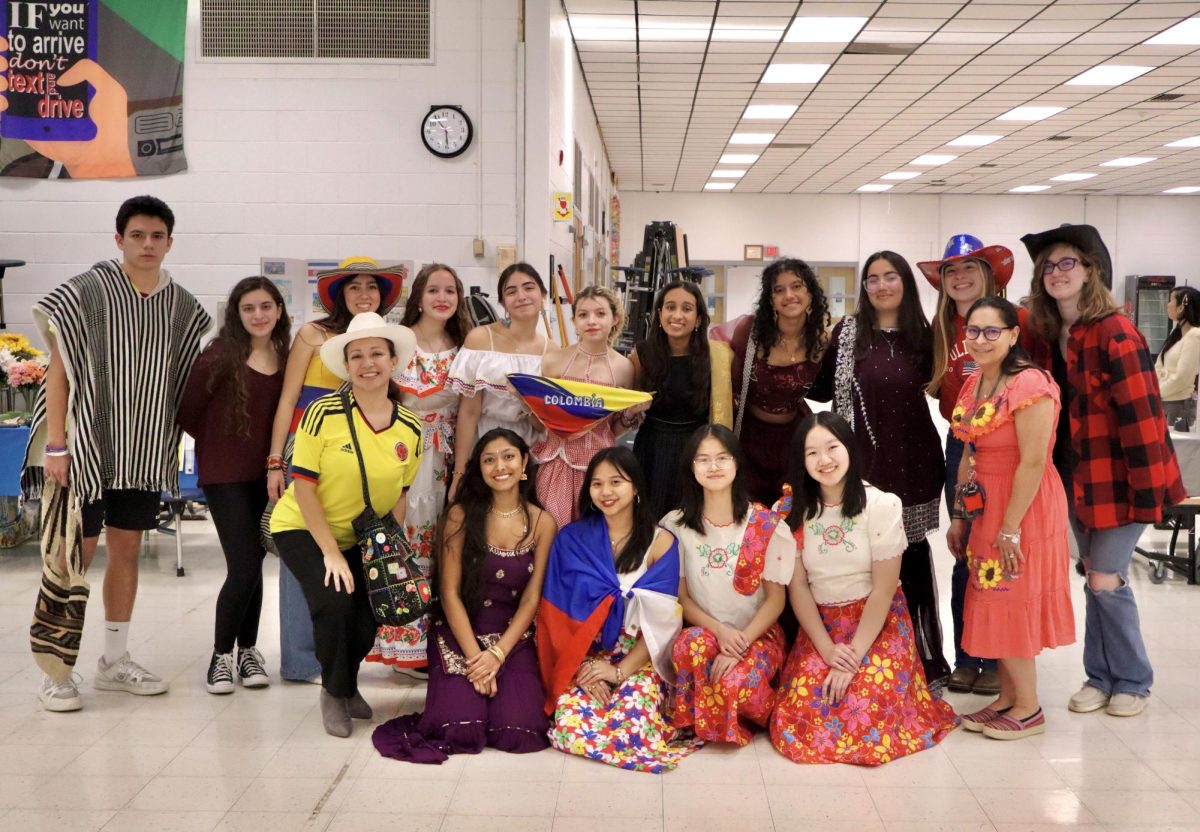Little Women: Greta Gerwig’s Interpretation of the March Sisters’ Story
January 27, 2020
The March sisters, Meg, Jo, Beth, and Amy, have appeared on our screens countless times. After the original novel was published in 1868, its five film adaptations, several television movies, a few Broadway plays, and even an opera, many believed that audiences were tired of visiting Orchard House. However, the idea that we have turned to Louisa May Alcott’s story too often, is largely mistaken. The true fact is that every generation deserves their own revitalization of Little Women.
On December 25, 2019, Greta Gerwig’s interpretation of the beloved novel, came to theatres everywhere. With Saorise Ronan as the passionate, second oldest sister Jo, it is no surprise that the movie would be an inspiring work with incredible success. In just the first weekend of its release, it generated over sixteen million dollars, proving that the fascination with Alcott’s characters has not ceased, even after one hundred fifty years.
The predominant reason that audiences are enthralled by Little Women, even today, it that it vividly portrays the most beautiful moments in life without shying away from the immense hardships. Greta Gerwig embraces this aspect of the story using intricate details to display how there is a constant flow through these different periods of life.
The novel tells the story of four sisters who come of age during the trials of the Civil War. As they endure the painfully awkward phase of growing into their own future, they rely on each other and the serenity of their childhood. The story centers around the second oldest sister Jo March. She is depicted as a fiery, outspoken girl who has a passion for writing.
Greta Gerwig’s initial triumph as director is her decision to stay true to the novel while giving a unique twist to the portrayal of the story line. Instead of beginning with their childhood, the movie commences as Jo (Saorise Ronan) collects herself as she stands outside the door of a New York City publisher. She desperately hopes that her work will soon be in print. Her sisters, similarly, attempt to keep their childhood ambitions alive while having to grow accustomed to adulthood. Beth (Eliza Scanlen) although often ill and at home, possess incredible musical talent. Meg (Emma Watson), the oldest and most responsible, delves into the new period of life as a wife and mother. The youngest, Amy (Florence Pugh) expands her artistic talents in Europe as she matures into womanhood. The plot soon brings the sisters back to the comforts of home to once again face the impending hardships together.

Not only does the story unfold from the perspective of Jo March as an adult, but Gerwig also intertwines the two distinct parts of the novel. Jo focuses on current elements of her daily life while looking back on her childhood memories. Greta Gerwig effortlessly swings the story line back and forth across several years in order to incorporate both aspects of the plot.
When the novel was originally published, Louisa May Aclott ends the story just as the characters reach adulthood. It was only after the vast success of her first novel, that she created the second part of the story. Although the two parts are currently published as one, there will forever be a clear difference in the childhood and adulthood sections of the story. Therefore, Gerwig ingeniously takes advantage of this component of the plot by portraying their childhood as Jo’s reminiscence.
Greta Gerwig distinguishes the two periods with the color scheme and overall mood. In the childhood memories, there is an effervescent golden glow cast all throughout the scene. While the later years would not be called dreary, it lacks the same warmth as the earlier times possess. In this beautiful symbolism Gerwig enhances Alcott’s original description of the ethereal quality that childhood memories always hold.
Overall, one of the most significant aspects of the film is the character development. Gerwig was able to maintain the personality and journeys as they are in the novel, but incorporated a new depth for the screen. Each sister is relatable to women of the present day, as they exhibit qualities that remain relevant. Not only is the transformation of the March girls explored, but also every character is given a vibrant role in the plot.
The high caliber of actors greatly contributed to the quality of each character and subsequently furthered the depiction of the story. With Timothee Chalamet as Laurie, Laura Dern as Marmee, and Meryl Streep playing Aunt March, there could not be a better cast to depict the narrative of the March sisters.
The most enthralling aspect of the film is the stunning visual imagery and aesthetic. Every single scene is breathtaking in regards to the scenery. The audience is completely engrossed by the imagery, creating the feeling that we were alongside Jo for the duration of the movie. The film was entirely shot in Concord, Massachusetts, where Louisa May Alcott lived and wrote the novel. Therefore, the setting provides a gorgeous backdrop for the plot and also, provides historical accuracy. Another feature of the film that adds to the aesthetic is the incredible costume design. Academy Award winning costume designer, Jacqueline Durran, diligently studied the time period and the original novel in order to achieve precise validity. In order to maintain the integrity of the individual character, she artfully gave each sister her own color palette and specific articles of clothing to represent their role in the story.
“Little Women” is truly a movie that everyone should experience. The film perfectly intertwined elements that re-imagine with staying true to the beloved novel. The cast is evidently incredible and greatly contributed to the richness of each character. Visually, it is exquisite with the flawless use of scenery and color schemes. Greta Gerwig’s “Little Women” ushers the cherished characters into the 21st century, guiding the March sisters to be forever linked with our history and to be a pivotal aspect of every young woman’s journey.














































